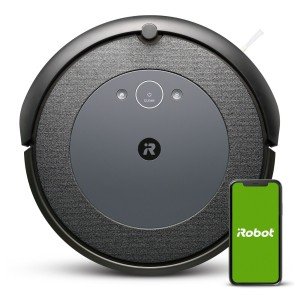The Rise of Robot Vacuum Cleaners in Industrial Settings
Over the last few years, the landscape of industrial cleaning has experienced a considerable improvement with the introduction of robot vacuum cleaners. These automated gadgets are not simply a novelty for homes; they have actually gained traction in storage facilities, producing plants, and other industrial environments. This post checks out the performance, benefits, and factors to consider of robot vacuum within the industrial context, while answering some regularly asked concerns.
What are Robot Vacuum Cleaners?
Robot vacuum cleaners are automated cleaning devices geared up with innovative sensing units and innovation that enable them to browse around areas, detect dirt, and vacuum surfaces without direct human intervention. In industrial settings, they are developed to manage a range of debris types, facilitate routine cleaning schedules, and improve general operational effectiveness.
Table 1: Key Features of Industrial Robot Vacuum Cleaners
| Function | Description |
|---|---|
| Navigation | Utilizes LiDAR or camera-based navigation for accurate mapping. |
| Size and Design | Compact and robust style to fit in tight spaces and hold up against tough environments. |
| Self-Charging | Automatically go back to its docking station for charging. |
| Dustbin Capacity | Bigger dustbin matched for industrial particles sizes and volumes. |
| Programs | Can be programmed for scheduling and particular cleaning jobs. |
| Information Collecting | Equipped with sensing units to collect data for maintenance and cleaning analysis. |
Benefits of Robot Vacuum Cleaners in Industrial Settings
The adoption of robot vacuum features a myriad of benefits:
Increased Efficiency:
- 24/7 Operation: Unlike human cleaners, robots can operate around the clock, adding to continuous cleanliness without downtime.
- Time-Saving: Automated cleaning enables employees to concentrate on core tasks instead of cleaning responsibilities.
Expense Savings:
- Labor Costs: Maintaining a robot vacuum can reduce the requirement for a large cleaning staff, decreasing overall labor expenses.
- Operational Efficiency: With enhanced cleanliness and lowered downtime due to upkeep problems, organizations can save money on functional expenses.
Boosted Safety:
- Reduced Risk: By reducing the human involvement in hazardous cleaning environments, the risk of accidents is decreased.
- Consistent Cleaning: Robot vacuums guarantee that locations are regularly cleaned, decreasing slip threats and unhealthy environments.
Increased Flexibility:
- Customizable Cleaning Routes: These machines can be configured to clean particular locations or floorings, adapting to changing industrial designs.
- Range of Surfaces: Industrial robot vacuums can manage numerous flooring types, from concrete to tiles, making them flexible.
Ecological Impact:
- Sustainable Cleaning Solutions: Many designs use minimal water and environmentally friendly cleaning solutions, assisting in business sustainability efforts.
Table 2: Industrial Applications of Robot Vacuum Cleaners
| Market | Application |
|---|---|
| Manufacturing | Cleaning assembly line and assembly locations. |
| Warehousing | Maintaining clean and organized storage areas. |
| Food Processing | Ensuring cleanliness in sensitive locations to satisfy hygiene requirements. |
| Pharmaceuticals | Preserving ultra-clean environments for production. |
| Logistics and Distribution | Keeping paths clear for effective operation. |
Challenges and Considerations
While the advantages are substantial, organizations ought to likewise consider numerous difficulties:
- Initial Investment: The upfront costs of purchasing industrial robot vacuum can be considerable, though long-lasting cost savings might offset this expense.
- Upkeep and Repairs: Regular maintenance is important to keep the robotic systems working efficiently, and repair work can incur additional costs.
- Integration: Businesses might require to integrate these machines into existing workflows, which can need time and change.
- Training and Support: Staff might need training to successfully manage these makers, particularly when fixing or programming is needed.
FAQs About Robot Vacuum Cleaners in Industrial Settings
1. How much do industrial robot vacuum cleaners cost?
The expense can vary from a few thousand to tens of countless dollars, depending on specifications, functions, and brand.
2. What types of surface areas can they clean up?
Robot vacuum cleaners appropriate for different surface areas including carpets, tiles, concrete, and even some wood floorings.
3. How do they browse complicated industrial environments?
Most industrial robot vacuums utilize sophisticated navigation systems like LiDAR, cameras, and sensors to draw up and adjust to their surroundings for efficient cleaning.
4. Can they clean up large locations without human intervention?
Yes, industrial robot vacuums are created to tidy substantial areas with pre-programmed paths and schedules, efficiently operating autonomously.
5. Are these robots eco-friendly?
Numerous models focus on efficiency and lower water usage, making them a more ecologically friendly cleaning alternative compared to standard approaches.
The intro of robot vacuum cleaners into industrial environments represents an exceptional improvement in cleaning technology. With Robot Vacuum Mops to boost efficiency, lower labor costs, and preserve safety, these automated systems are leading the way for smarter and cleaner industrial operations. While challenges may exist, the long-lasting benefits and technological developments are encouraging for markets looking for to enhance their cleaning procedures. As innovation continues to develop, we can anticipate additional developments in robot vacuum cleaners that will change industrial cleaning practices a lot more.

